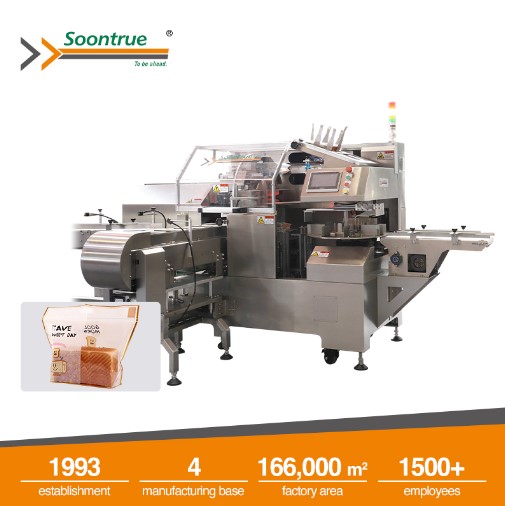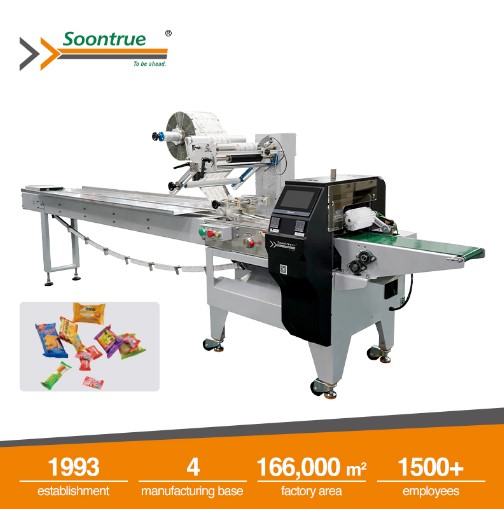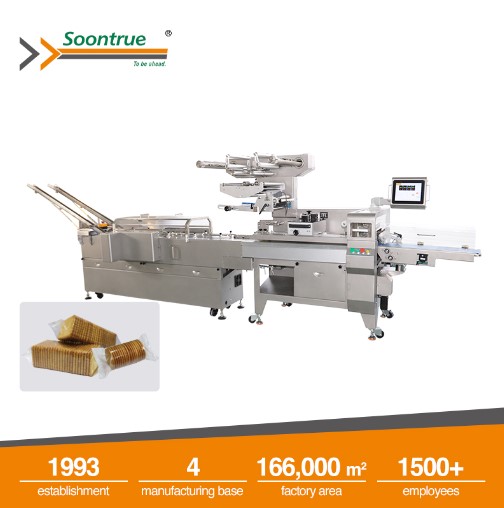Máquina envasadora vertical versus horizontal: ¿cuál es la diferencia?
El embalaje es fundamental en las industrias de fabricación y distribución. No sólo protege las cosas, sino que también funciona como una herramienta de marketing y marca. Los fabricantes deben decidir si utilizan embalajes verticales u horizontales para sus productos. Ambos métodos tienen distintas ventajas y aplicaciones, y comprender las diferencias entre ellos es esencial para tomar la decisión correcta. En este artículo, exploraremos las disparidades clave entre el embalaje vertical y horizontal para ayudarle a decidir qué método se adapta a sus necesidades específicas.
¿Qué es el embalaje vertical?
El embalaje vertical, comúnmente conocido como embalaje de forma, llenado y sellado (FFS), es un método para fabricar contenedores a partir de rollos planos de película.La película normalmente se desenrolla y se le da una forma tubular alrededor de un producto. Luego, el paquete se sella y se corta, creando una bolsita o bolsa.
Características clave del embalaje vertical
Eficiencia y versatilidad
El envasado vertical es muy eficiente y versátil, capaz de envasar una amplia gama de productos, desde artículos granulados como arroz hasta productos líquidos como salsas e incluso artículos no alimentarios como alimentos para mascotas o detergentes. Puede admitir una amplia gama de formas y tamaños de productos, incluidas formas y tamaños irregulares, lo que la convierte en una buena solución para productores con líneas de productos diversificadas.
Opciones de sellado
El embalaje vertical ofrece una variedad de opciones de sellado, incluido el sellado térmico, el sellado por impulso y el sellado ultrasónico, lo que permite a los productores elegir el enfoque óptimo para su producto y material de embalaje únicos. Esta adaptabilidad garantiza la integridad del producto y minimiza el riesgo de fugas o contaminación.
Tipos de embalaje
El empaque vertical se puede usar para crear una variedad de estilos de empaque, incluidas bolsas tipo almohada, bolsas con fuelle y bolsas con sello cuádruple. Estas opciones brindan a los fabricantes la flexibilidad de elegir el estilo de empaque que mejor se adapte a sus productos y requisitos de marca.
Automatización e integración
Las máquinas empacadoras verticales son ideales para la automatización e integración en procesos de fabricación. Se pueden integrar con otros equipos como pesadoras multicabezales, sinfines y llenadoras volumétricas, lo que agiliza el proceso de envasado y aumenta la eficiencia de la producción.
¿Qué es el embalaje horizontal?
El embalaje horizontal, por otro lado, consiste en colocar un producto sobre una banda plana de material de embalaje y envolverlo alrededor.Este método se usa comúnmente para productos como barras de chocolate, galletas y otros artículos con forma rectangular o cuadrada.
Características clave del embalaje horizontal
Estética y marca
El embalaje horizontal suele elegirse para productos en los que el atractivo visual es esencial, como productos de confitería, snacks y productos de panadería. La posición horizontal del empaque permite un lienzo más amplio para la marca, los gráficos del producto y la información nutricional, lo que puede aumentar el atractivo para el cliente.
Eficiencia y sostenibilidad de la película
En términos de utilización de la película, el embalaje horizontal puede ser bastante eficiente. Reduce el desperdicio de material ya que frecuentemente incluye corte y sellado precisos. Esta eficiencia puede contribuir a los esfuerzos de sostenibilidad al reducir los residuos de envases.
Facilidad de uso
Los productos envasados horizontalmente suelen ser fáciles de abrir para los consumidores. Los envases horizontales suelen utilizar tiras desgarrables y elementos resellables para brindar comodidad y al mismo tiempo garantizar que los alimentos permanezcan frescos y protegidos después de abrirlos.
Personalización
El empaque horizontal es ideal para productos con formas únicas o aquellos que requieren ventanas o características troqueladas personalizadas. Esta personalización puede hacer que los artículos se destaquen en el estante y capten la atención de los clientes.
Embalaje secundario
El embalaje horizontal también se puede integrar en soluciones de embalaje secundario, como el embalaje de cartón o el embalaje de cajas, que se utilizan ampliamente en el sector de alimentos y bebidas para agrupar artículos para el tránsito y la exhibición minorista.
Elegir el método de embalaje adecuado
La elección entre embalaje vertical y horizontal depende en última instancia de la naturaleza de su producto, las necesidades de producción y los objetivos de marketing. Aquí hay algunos factores a considerar al tomar esta decisión:
Forma del producto: si su producto tiene una forma irregular o si desea enfatizar la estética y la marca, el empaque horizontal puede ser la mejor opción. El embalaje vertical puede ser preferible para productos como patatas fritas, snacks y bebidas.
Velocidad de producción: Las máquinas empacadoras verticales suelen ser más rápidas que las máquinas empacadoras horizontales, lo que las hace ideales para la fabricación de grandes volúmenes. Si bien el embalaje horizontal es adaptable, puede ser preferible para artículos especiales o de bajo volumen.
Si tiene un espacio limitado, una máquina envasadora vertical podría ser la opción más práctica.
Material de embalaje: Su elección también puede verse influenciada por el tipo de material de embalaje que desee utilizar. Algunos materiales pueden funcionar mejor con embalajes verticales, mientras que otros pueden ser más adecuados para embalajes horizontales.
Conclusión
La elección entre métodos de embalaje vertical y horizontal es una cuestión crítica en la industria del embalaje que puede afectar la calidad, la eficiencia y la comerciabilidad del producto.Como fabricante líder de máquinas envasadoras en China, Soontrue ofrece una amplia gama de máquinas envasadoras que incluyen máquinas envasadoras verticales y máquinas envasadoras horizontales . Si los estás buscando ¡contáctanos ahora!





